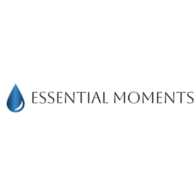Lymphatic Massage: Exploring Benefits & Potential Risks

Lymphatic massage is a gentle therapy aimed at stimulating the flow of lymph fluid in the body. This helps with detoxification, reduces swelling, and boosts immunity. In this article, you’ll learn about the benefits of lymphatic massage, how it works, and what to expect during a session. What Is Lymphatic Drainage Massage? Manual lymphatic drainage (MLD) is a distinct variety of lymphatic massage that involves gentle, rhythmic hand strokes to promote the movement of lymph fluid within the network of lymphatic vessels. This technique supports the function of the lymphatic system—a complex network made up of numerous critical components, each of which plays an important part in maintaining the body’s fluid balance and immunological function. By filtering waste and toxins through the lymph nodes, the lymphatic system plays a crucial role in detoxification, helping you to sustain a healthy internal environment. How do I know when to get Professional Lymphatic Drainage? Here are several major indicators that you need expert lymphatic massage treatment: Recurrent Infections Persistent Swelling and Edema Chronic Conditions such as Lymphedema and Fibromyalgia Headaches Digestive Issues Fatigue Skin Changes How important is early detection of Lymphatic Congestion? By working with healthcare experts from the beginning, you can ensure the development of a comprehensive treatment plan that addresses all aspects of your lymphatic health, including underlying causes and supportive therapies. Early discovery is crucial for treatment intervention, reducing the chance of complications such as: Fatigue Edema Chronic Swelling Fibrosis Skin Infections Swollen Lymph Nodes in Your Neck How Does Lymphatic Massage Work? Lymphatic massage utilizes a range of methods that incorporate gentle, rhythmic pressure to boost lymph circulation and support the body’s detoxification process. Developed in the 1930s by Dr. Emil Vodder, manual lymphatic drainage (MLD) utilizes precise, rhythmic hand movements to stimulate lymphatic flow through the vessels and nodes. These spiral-like strokes help to reduce swelling and edema, particularly after surgery or injury. By activating the lymphatic system, MLD increases the immunological responses, aids in infection prevention, and promotes the efficient elimination of waste and toxins. Studies have shown that managing post-traumatic edema is crucial for preventing secondary injury and promoting faster recovery in patients with orthopedic injuries, but further research is needed to determine its effectiveness in improving patient and disease-oriented outcomes for orthopedic injuries. More studies conclude that while preliminary evidence and animal studies support the potential benefits of manual lymphatic drainage techniques (MLDTs) in reducing edema and muscle damage markers in athletic injuries, high-quality clinical trials are needed to establish definitive guidelines for their use in sports medicine and rehabilitation. Additional research supports findings from a systematic review conducted to evaluate the effectiveness of massage in fibromyalgia. The review suggests that myofascial release provides significant benefits, particularly in reducing pain, anxiety, and depression. At the same time, manual lymphatic drainage may be more effective than connective tissue massage for stiffness, depression, and quality of life. Are There Any Risks or Complications of Lymphatic Drainage Massage? Lymphatic massage is generally considered a safe and effective method for managing lymphedema. However, it may not be suitable for everyone. You should avoid it if you have: Deep Vein Thrombosis Heart Disease Blood Clots Infection Stroke Kidney failure Health Benefits of Lymphatic Massage 1. Reducing Swelling and Inflammation Manual lymphatic drainage (MLD) is particularly effective in reducing swelling and inflammation, making it a go-to treatment for conditions such as lymphedema, arthritis, and post-surgical rehabilitation. Massaging areas without swelling creates space for congested lymph fluid to flow, reducing swelling. This technique can also help minimize facial puffiness and improve facial contours, giving you a more refreshed appearance. 2. Boosting Immune System Lymphatic massage is known for its significant role in fortifying the immune system. It improves the body’s ability to absorb and transport lymph fluid, elevating the immune response’s efficacy. During Manual Lymph Drainage (MLD), specific hand techniques exert pressure on the skin, helping to expel toxins and bacteria and bolster the body’s inherent defensive systems. 3. Enhancing Post-Procedure Healing Manual lymphatic drainage (MLD) offers significant advantages following cosmetic surgeries. It aids in recuperation, diminishes discomfort, and promotes better blood flow. It becomes a vital component of care after a procedure by fostering quicker healing and minimizing the likelihood of developing postoperative lymphedema. 4. Detoxification Lymphatic drainage massage helps eliminate waste and toxins from the body, resulting in a cleaner interior environment. This detoxification process reduces the strain on the liver and kidneys, allowing them to operate more effectively. 5. Improved Circulation This massage technique increases blood flow, supplying vital nutrients and oxygen to tissues while eliminating metabolic waste. Improves circulation benefits, cardiovascular health, and energy levels. 6. Relaxation and stress relief This massage’s soothing, rhythmic motions foster a state of relaxation and well-being. It can assist to reduce stress, improve sleep quality, and boost mental clarity. Self-Lymphatic Drainage Techniques Self-lymphatic drainage techniques can be a great way to maintain your lymphatic health between professional sessions. However, it’s essential to consult a healthcare provider before attempting these techniques, especially if you have underlying health conditions. The goal is to ensure that self-drainage is safe and appropriate for your specific situation. Self-administered lymphatic drainage methods require the application of gentle pressure alongside particular maneuvers aimed at stimulating the flow of lymph fluid. These techniques encompass soft, circular movements using one’s fingertips, gliding strokes oriented towards the lymph nodes, and progressing from the body’s outer extremities inward toward its core. To preserve their effectiveness, refrain from applying oils or lotions while performing these massages. Integrating Profesional Treatments with Self-Care By combining professional treatments with your self-care practices, you can enhance the overall effectiveness of both approaches. Here are some examples: 1. Hydration & Nutrition Drink plenty of water to keep lymph fluid moving efficiently. Incorporate anti-inflammatory foods like turmeric, ginger, and leafy greens. Consume a diet rich in fruits, vegetables, and lean proteins to support detoxification.

